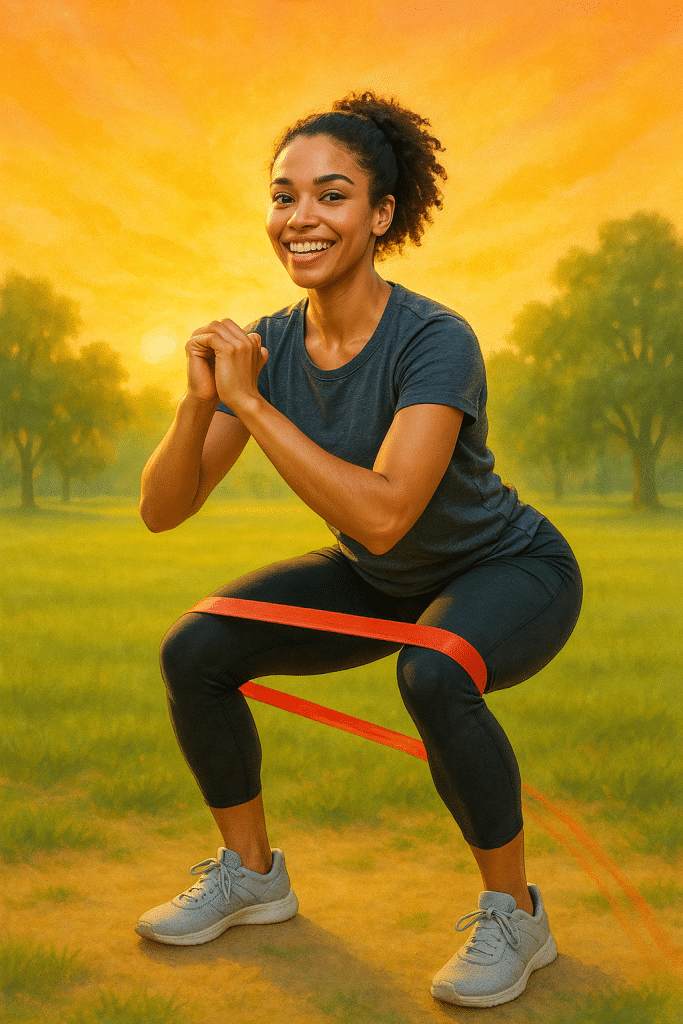Embarking on a fitness journey can be both exciting and challenging, especially for beginners looking to build strength safely and effectively. One of the most accessible, versatile, and affordable tools to help achieve this is resistance bands. Whether you want to work out at home, in the park, or while traveling, resistance bands provide the perfect solution for full-body training without bulky equipment. In this comprehensive guide tailored for fitness enthusiasts seeking effective workouts and recovery tips, I’ll walk you through everything you need to know about resistance band workouts for beginners—from choosing the right bands to performing essential exercises and structuring your workout plan for success.
In this article, we’ll explore different types of resistance bands and their benefits, warm-up strategies, detailed workout routines targeting all major muscle groups, recovery techniques, and expert product recommendations to get you started confidently. So, whether you’re looking to tone muscles, increase flexibility, or rehabilitate after an injury, this guide will equip you with practical knowledge and actionable steps to incorporate resistance band training into your lifestyle effectively.
Understanding Resistance Bands: Types, Benefits, and Selection
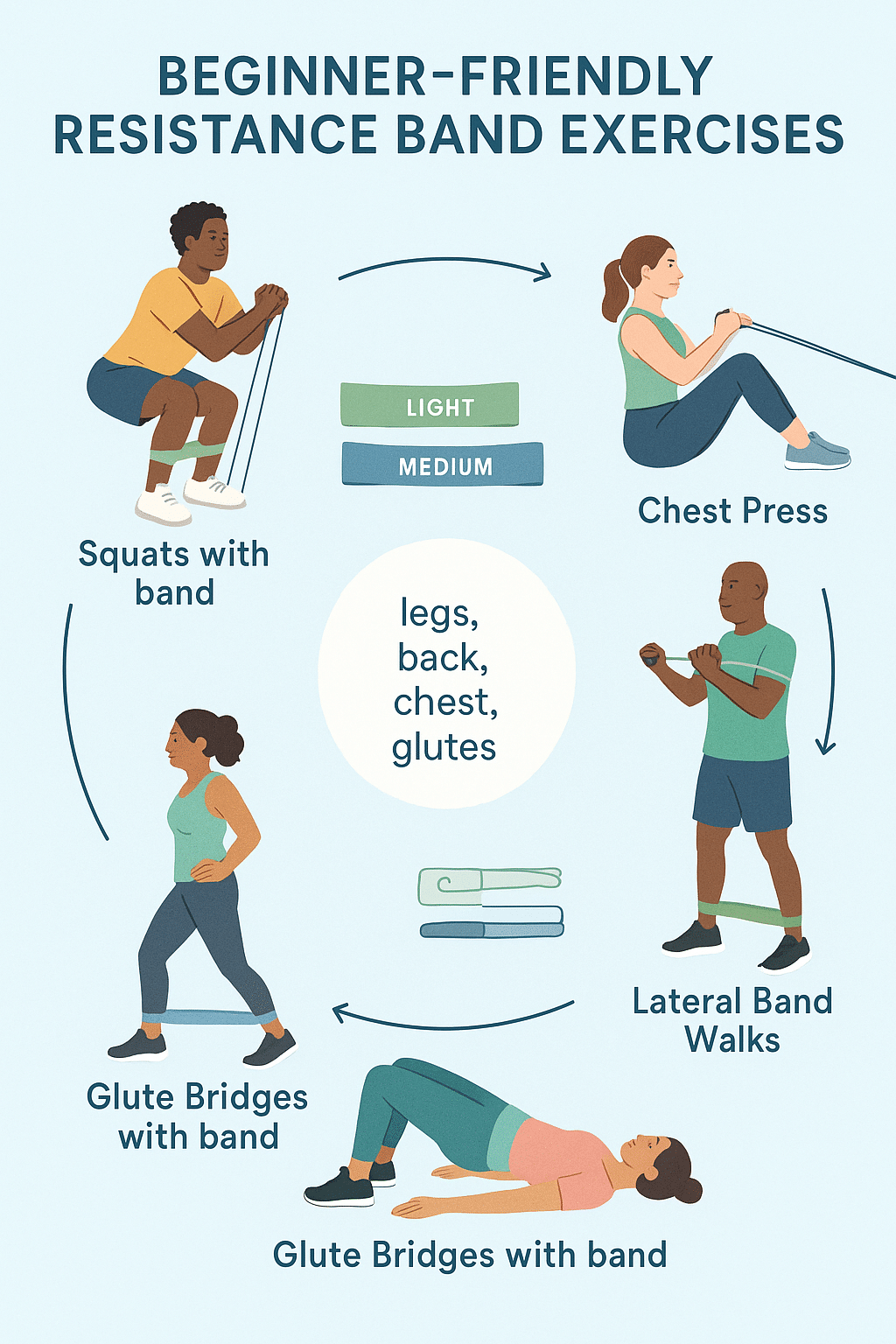
Before diving into workout routines, it’s important to understand the variety of resistance bands available, the distinct advantages they bring, and how to select the best bands suited to your fitness level and goals.
Types of Resistance Bands: Loop, Tube, Therapy, and Pull-Up Assistance
Resistance bands come in several forms, each designed for specific types of exercises and fitness needs:
-
Loop Bands: Circular bands typically made of latex or synthetic rubber, loop bands are ideal for lower-body exercises like squats, glute bridges, and lateral walks. Their continuous loop provides consistent tension and is beginner-friendly due to ease of use and varied resistance levels. The Fit Simplify Resistance Loop Exercise Bands are a prime example, offering five resistance levels from extra light to extra heavy, perfect for beginners and progressive strength building.
-
Tube Bands: These bands feature handles attached to elastic tubes, allowing for more versatile upper-body workouts such as rows, chest presses, and bicep curls. The Bodylastics Resistance Bands Set combines multiple tension bands for adjustable resistance and includes safety features like Snap Reduction Technology, making them great for both beginners and advanced fitness enthusiasts.
-
Therapy Bands: Usually flat and thinner than other types, therapy bands are commonly used in rehabilitation settings to improve flexibility, range of motion, and gentle strength training. The TheraBand Resistance Bands Set offers color-coded bands ranging from very light to heavy resistance, helping users progress safely during recovery or initial fitness stages.
-
Pull-Up Assistance Bands: Specifically designed to assist with pull-ups, these longer and thicker bands reduce body weight during the exercise, enabling beginners to build the strength required. The WODFitters Pull-Up Assistance Bands provide a range of resistances from 2 lbs up to 200 lbs, catering to all skill levels.
Benefits of Resistance Band Training for Beginners
Resistance band workouts offer numerous advantages that make them highly effective, especially for those new to strength training:
- Accessibility & Affordability: Bands are compact, lightweight, and affordable compared to free weights or machines, making them ideal for home workouts or travel.
- Versatility: With resistance bands, you can target every muscle group, performing a broad range of exercises from strength building to flexibility and mobility training.
- Progressive Resistance: Bands come in multiple resistance levels, allowing smooth progression tailored to your strength gains.
- Joint-Friendly: Elastic resistance reduces joint strain compared to heavy free weights, making bands safe for those with arthritis or prior injuries.
- Improved Muscle Activation: Because bands provide continuous tension through all parts of a movement, they enhance muscle activation and engagement.
- Rehabilitation & Recovery: Bands aid in gentle strengthening and flexibility, essential for physical therapy.
How to Choose the Right Resistance Band for Your Fitness Level
Picking the appropriate resistance band requires consideration of several factors:
- Resistance Level: Beginners should start with light to medium resistance bands to avoid muscle strain. For example, TheraBand’s Beginner Kit offers bands in yellow, red, and green that are perfect starting points.
- Band Type: Decide if you prefer loop bands for lower-body exercises or tube bands for upper-body workouts with handles.
- Material Allergy: If you have latex sensitivities, non-latex bands like those from TheraBand’s non-latex collection are a good choice.
- Intended Use: Select bands that align with your workout style. For pull-up assistance, WODFitters bands are specialized in that regard.
- Budget and Portability: Basic loop bands such as Fit Simplify’s are budget-friendly and come with a carry bag for on-the-go workouts.
Preparing for Your Workout: Warm-Up and Proper Form
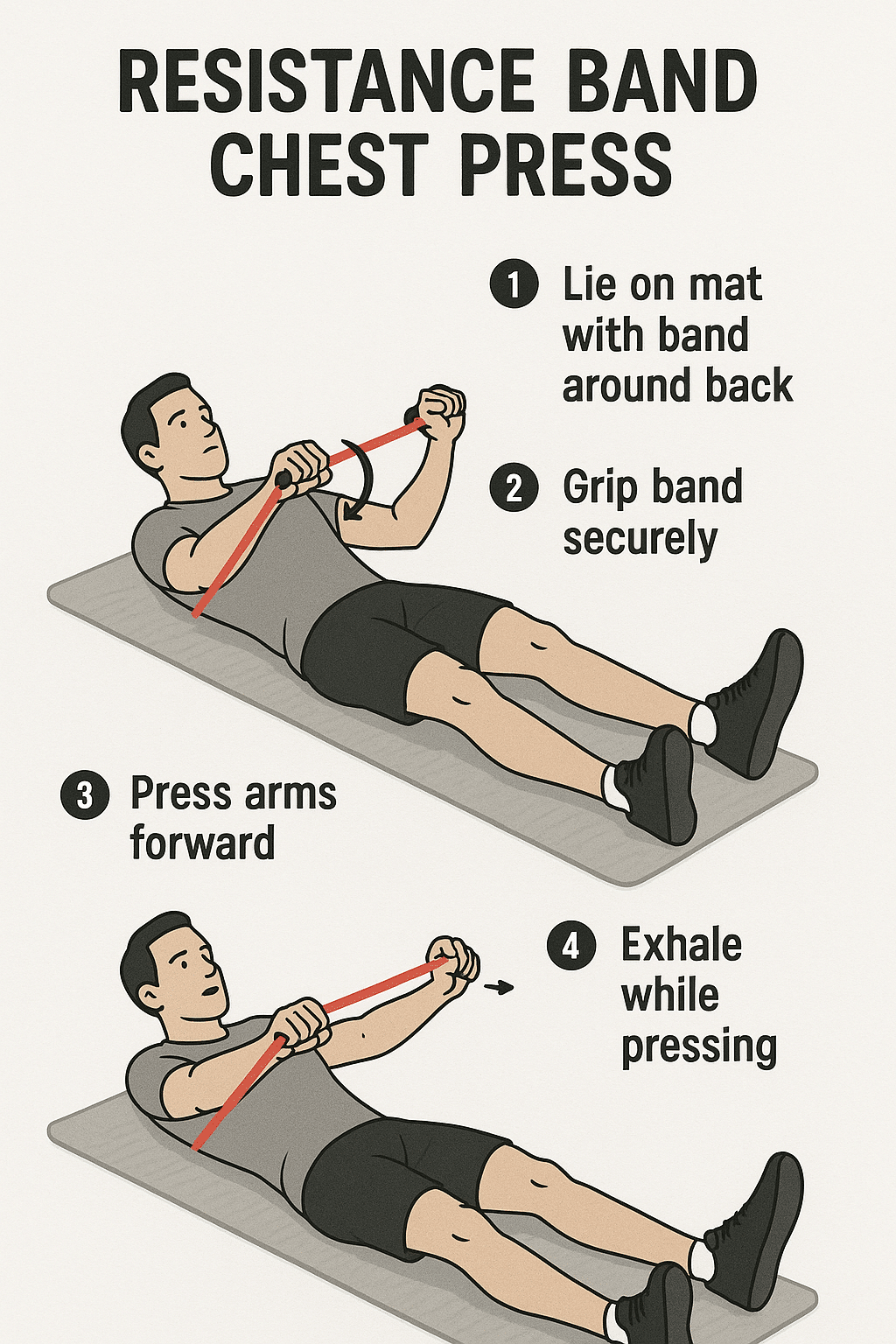
An often overlooked but critical part of any workout routine is warming up and mastering correct form to maximize benefits and minimize injury.
Resistance Band Warm-Up Exercises for Beginners
Preparing your muscles and joints before resistance training reduces injury risk and improves workout performance. Here are some beginner-friendly band warm-ups:
- Lateral Band Walks: Place a loop band around your thighs just above your knees. Step sideways 10 steps in each direction, keeping tension on the band. This activates the glutes and hips.
- Band Pull-Aparts: Hold a tube or loop band straight in front at shoulder height. Pull it apart by squeezing shoulder blades together. Repeat 15-20 times to warm up upper back and shoulders.
- Arm Circles with Band: Loop the band around your wrists and take small, slow arm circles forward and backward for 30 seconds.
- Ankle Rotations: With a light loop band around ankles, lift one foot off the ground and rotate the ankle in circular motions to improve joint mobility.
Key Form and Technique Tips to Maximize Muscle Activation and Prevent Injury
- Maintain Neutral Spine: Keep your back straight, avoiding slouching or overarching during movements.
- Engage Core: Activate your abdominal muscles by imagining pulling your navel toward your spine.
- Controlled Movements: Avoid jerky or fast motions; a slow, steady pace ensures better muscle engagement.
- Use Full Range of Motion: Fully extend and contract muscles to maximize strength benefits.
- Breathing: Exhale during exertion (muscle contraction) and inhale during relaxation.
Practicing good technique also primes your body to progress safely to more difficult exercises or heavier resistance bands.
Full-Body Resistance Band Workouts for Beginners
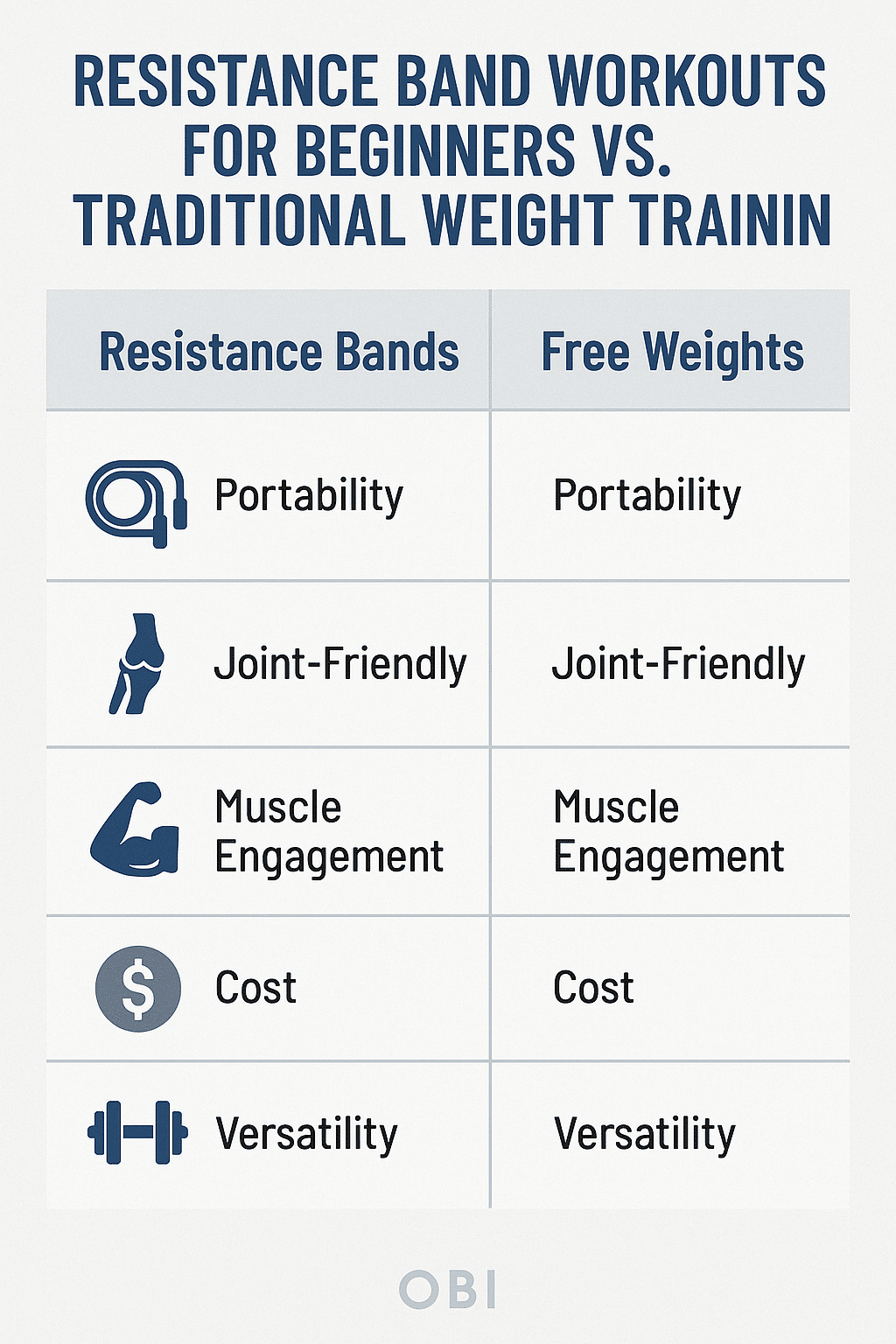
Now that you’re warmed up and equipped with the right bands, let’s dive into full-body workouts structured specifically for beginners. These sessions utilize exercises that engage multiple muscle groups while being manageable for novice users.
Lower Body Focus: Squats, Glute Bridges, and Lateral Band Walks
- Resistance Band Squats:
- Loop the band around your thighs just above your knees.
- Stand with feet shoulder-width apart.
- Lower your hips back and down as if sitting on a chair, keeping knees in line with toes and band taut.
- Push through your heels and stand up.
- Perform 3 sets of 12-15 repetitions.
Why? Squats engage quads, hamstrings, glutes, and core, building foundational lower-body strength. The band increases activation in glutes by encouraging knee stability.
- Glute Bridges with Band:
- Lie on your back with knees bent, band looped around thighs just above the knees.
- Keep feet flat on the floor hip-width apart.
- Engage your core and lift hips toward the ceiling, squeezing glutes at the top.
- Hold for 2 seconds, lower slowly.
- Perform 3 sets of 15 reps.
Why? This exercise strengthens glutes and hamstrings with minimal back strain and improves pelvic stability.
- Lateral Band Walks:
- With band around thighs, get into a slight squat stance.
- Step to the right 10 steps, then left 10 steps.
- Repeat 3 rounds.
Why? This targets hip abductors critical for balance and injury prevention, especially for beginners with weak hips.
Upper Body Focus: Band Pull-Aparts, Standing Chest Press, and Rows
- Band Pull-Aparts:
- Hold a loop or tube band at shoulder height with straight arms.
- Pull the band wide, squeezing shoulder blades together.
- Slowly return to start.
- Do 3 sets of 15 reps.
Why? Strengthens the rear deltoids and upper back to improve posture and shoulder stability.
- Standing Chest Press:
- Anchor the band behind you (e.g., a door anchor or sturdy surface).
- Hold handles or band ends at chest level.
- Push forward until arms extend fully, then return slowly.
- Complete 3 sets of 12 reps.
Why? Engages chest, triceps, and shoulders, complementing pulling exercises.
- Seated Band Rows:
- Sit with legs extended, looped band around feet, holding handles.
- Pull handles toward your torso, squeezing shoulder blades.
- Release with control.
- Perform 3 sets of 12-15 reps.
Why? Builds upper back and bicep strength improving posture and arm function.
Core Strengthening: Resistance Band Core Workouts for Stability and Balance
Core stability is vital for overall functional strength and preventing injuries. Resistance bands elevate traditional core moves by adding constant tension.
-
Band-Resisted Dead Bug: Lie on your back and anchor a loop band around your feet while holding its ends. Alternately extend opposite arm and leg while keeping your core tight.
-
Standing Woodchoppers: Anchor band low to the side. Holding the handle, pull band diagonally upward across your body, rotating your torso. This trains obliques and rotational core muscles.
-
Plank with Band Arm Raises: In a forearm plank position, wrap a small loop band around wrists. Slowly raise one arm at a time against band resistance to challenge shoulder stability and core.
Deep Core Engagement Beyond Traditional Sit-Ups
Unlike sit-ups, many resistance band core exercises encourage activation of deep core muscles such as the transverse abdominis and multifidus. These muscles stabilize the spine and pelvis, essential for beginners to develop before advancing to more intense core workouts.
Structuring Your Beginner Resistance Band Workout Plan
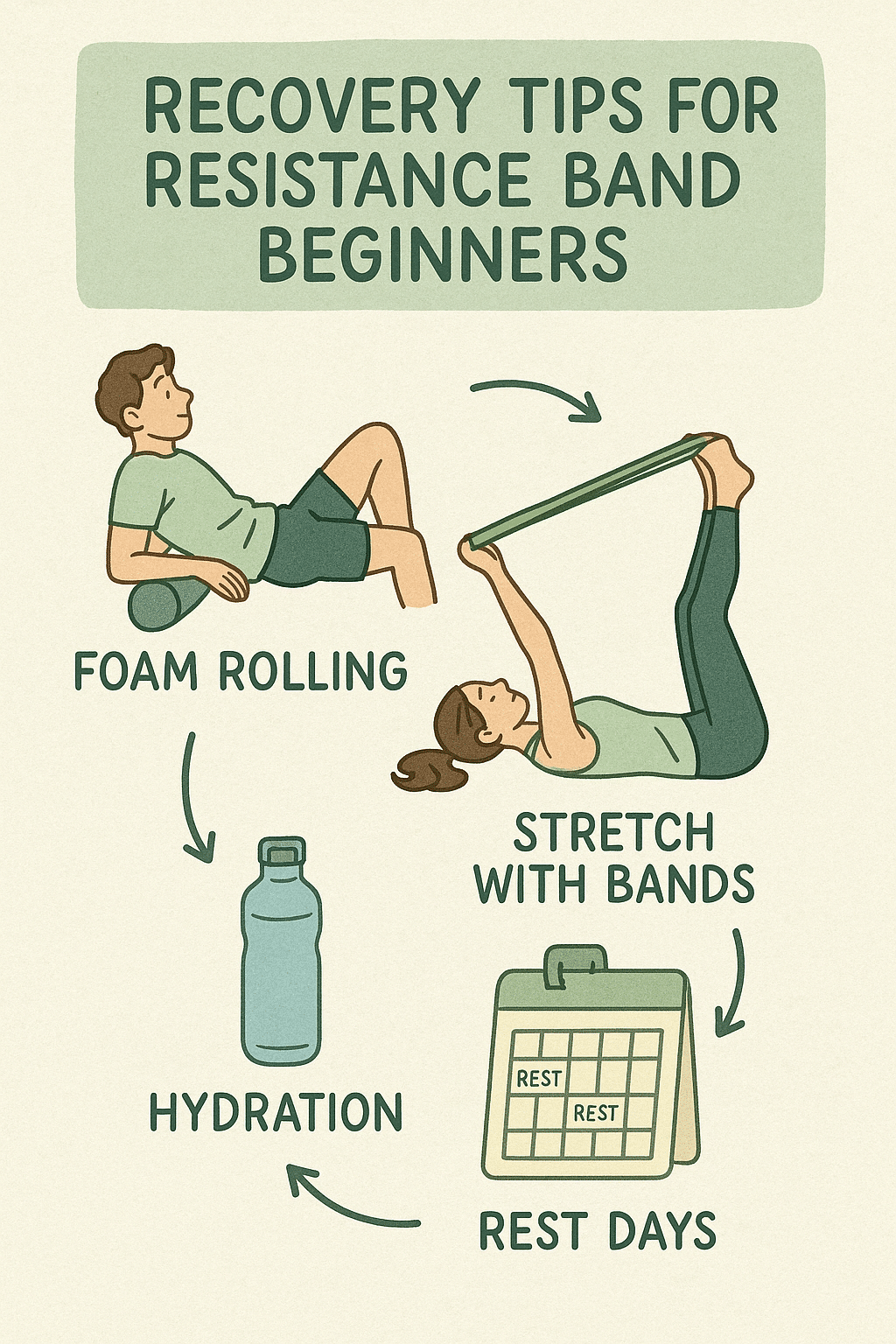
Crafting a structured workout plan helps you stay consistent, track progress, and avoid plateauing. Here’s a sample weekly plan focusing on progressive strength building:
| Day | Workout Type | Focus Area | Duration |
|---|---|---|---|
| Monday | Resistance Band Full Body Circuit | Balanced upper/lower body and core | 30–40 mins |
| Wednesday | Upper Body + Core | Pull-aparts, presses, rows, core work | 30 mins |
| Friday | Lower Body + Core | Squats, glute bridges, lateral walks | 30 mins |
| Sunday | Active Recovery | Low impact resistance band stretches | 20 mins |
Recommended Sets, Reps, and Rest Periods
- Sets/Reps: Start with 2–3 sets per exercise, 12–15 reps to build endurance and foundational strength.
- Rest: 30–60 seconds between sets, increasing rest as intensity grows.
- Progression: After 3–4 weeks, increase resistance or reps gradually to challenge muscles.
Circuit Training Approach and Benefits
Performing exercises back-to-back with minimal rest—circuit training—improves cardiovascular fitness while strengthening muscles. For beginners, circuits involving resistance bands target multiple muscle groups efficiently, saving time and enhancing calorie burn.
Recovery and Mobility: Post-Workout Stretching and Resistance Band Recovery Workouts
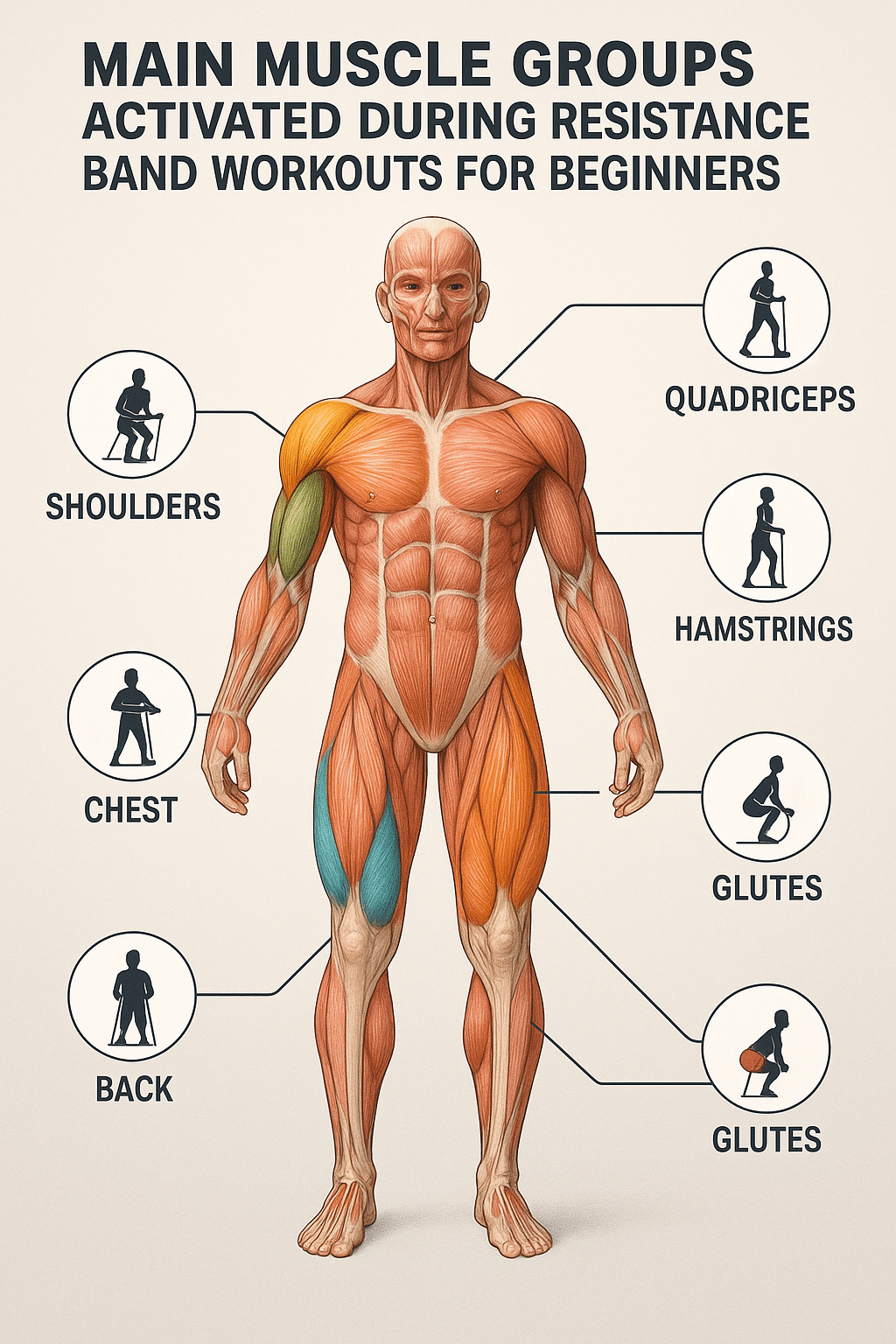
Recovery is equally important as the workout itself. Resistance bands offer excellent options to aid mobility and reduce soreness.
Low Impact Resistance Band Exercises for Active Recovery
- Standing Hamstring Stretch: Use a loop band around one foot, keeping the leg straight and gently pulling to stretch hamstrings.
- Shoulder Mobility Stretch: Hold a band overhead with both hands and slowly pull to open the shoulder girdle.
- Hip Flexor Stretch: Loop the band around your thigh, gently pulling leg back for a deep stretch while lying on your side.
These exercises promote blood flow and flexibility without overloading muscles.
Injury Prevention and Rehabilitation Using Resistance Bands
Resistance bands are frequently prescribed in physical therapy to rebuild strength with controlled resistance. Their elastic nature allows progressive loading without joint stress. For example, the TheraBand Resistance Bands are widely used in clinics for knee, shoulder, and back rehab. Incorporate these gentle exercises post-workout or during recovery phases to reduce injury risk.
Integrating Resistance Bands with Other Training Modalities
Combining resistance bands with bodyweight exercises and cardio can provide a balanced and functional fitness routine.
Combining Resistance Bands with Bodyweight Exercises and Cardio
Pair band exercises with squats, push-ups, or lunges to increase resistance and muscular challenge. Introducing intervals of jumping jacks or brisk walking can elevate heart rate, improving cardiovascular health alongside strength.
Using Resistance Bands for Physical Therapy and Rehabilitation
Bands enable targeted strengthening of weakened muscles post-injury. Their progressive resistance allows gradual reintroduction of load, improving mobility and pain management.
Expert Recommendations on Resistance Band Products for Beginners
Selecting quality resistance bands tailored to your needs ensures safety and motivation:
Fit Simplify Resistance Loop Exercise Bands
- Features: 100% natural latex, five resistance levels, suitable for lower-body and rehab.
- Pros: Affordable, durable, excellent for home and travel, includes carry bag.
- Usage: Great for beginners’ full-body workouts and physical therapy.
- Buy: Fit Simplify Website, Amazon
TheraBand Resistance Bands Set
- Features: Color-coded resistance, latex and non-latex options, ideal for rehab and strength.
- Pros: Trusted by physical therapists, easy progression.
- Buy: TheraBand Website, Amazon
Bodylastics Resistance Bands Set
- Features: Six bands with up to 142 lbs stackable resistance, patented anti-snap tech.
- Pros: Comprehensive accessories, versatile for full-body training.
- Buy: Bodylastics, retailers like Ritoyou, Ralphs.
Black Mountain Products Resistance Bands Set
- Features: Five color-coded bands, cushioned handles, ankle straps, door anchor.
- Pros: Good resistance range, full kit for home workouts.
- Buy: Amazon
WODFitters Pull-Up Assistance Bands
- Features: Eco-friendly latex, multiple resistance levels, focused on pull-up assistance.
- Pros: Durable, versatile for strength training and mobility.
- Buy: WODFitters Website, Amazon
Unique Approach: Progressive Resistance Band Workout Challenges to Enhance Motivation
Incorporating Resistance Levels and Exercise Variations for Sustained Strength Gains
To stay motivated, gradually increase band resistance or combine bands to increase difficulty. Experiment with tempo variations—slower eccentric phases or explosive concentrics—to engage muscles differently.
Tracking Progress and Adjusting Your Routine with Smart Band Selection
Maintain a workout journal or app to log sets, reps, and band tensions. As exercises become easier, switch to heavier bands from beginner kits like TheraBand or Bodylastics.
Frequently Asked Questions About Resistance Band Workouts for Beginners
1. Are resistance band workouts effective for building strength as a beginner?
Absolutely! Resistance bands provide progressive overload essential for strength gains. Studies show elastic resistance can match free weights for muscle activation while being gentler on joints.
2. How often should beginners perform resistance band workouts?
Aim for 3 sessions per week with at least one rest day in between, allowing muscles to recover and adapt.
3. Can resistance bands replace free weights for strength training?
For beginners, resistance bands provide sufficient resistance to build strength. For advanced lifters, bands can complement free weights but may not fully replace heavy lifting.
4. What are common mistakes to avoid during resistance band workouts?
Avoid using improper form, excessive speed, or bands that are too tight. Start with lighter bands, focus on controlled movements, and perform warm-ups.
5. How can seniors benefit from resistance band workouts?
Resistance bands offer low-impact strength training ideal for seniors, improving balance, flexibility, and muscle tone without stressing joints.
Quick Takeaways/Key Points
- Resistance bands are versatile, affordable, and beginner-friendly for full-body strength training.
- Choose the right type and resistance level based on your fitness goals and needs.
- Warm-ups with bands prepare muscles and prevent injury.
- Structured workouts targeting lower body, upper body, and core provide balanced strength development.
- Recovery and mobility exercises with bands help reduce soreness and support injury prevention.
- Integrate bands with bodyweight and cardio exercises for holistic fitness.
- Recommended products include Fit Simplify, TheraBand, Bodylastics, Black Mountain, and WODFitters.
- Track progress and gradually increase resistance to keep gaining strength and stay motivated.
Conclusion
Starting a fitness routine with resistance band workouts is a smart, efficient, and enjoyable way to build strength and improve your overall health. With their portability, scalability, and joint-friendly nature, resistance bands empower beginners like you to train confidently, whether at home, on the road, or in a rehab setting. By understanding the types of bands, performing proper warm-ups, mastering foundational exercises, and following a structured plan, you’ll see steady improvements in your muscle tone, stability, and mobility.
I encourage you to explore the recommended resistance band sets mentioned above, incorporating a variety of exercises tailored to your goals and fitness level. Don’t forget to prioritize recovery and listen to your body. As you progress, challenge yourself with more complex movements and higher resistance bands to keep your workouts fresh and rewarding.
Ready to transform your strength training routine? Grab a quality resistance band set today and begin your empowering journey toward a stronger, healthier you!

